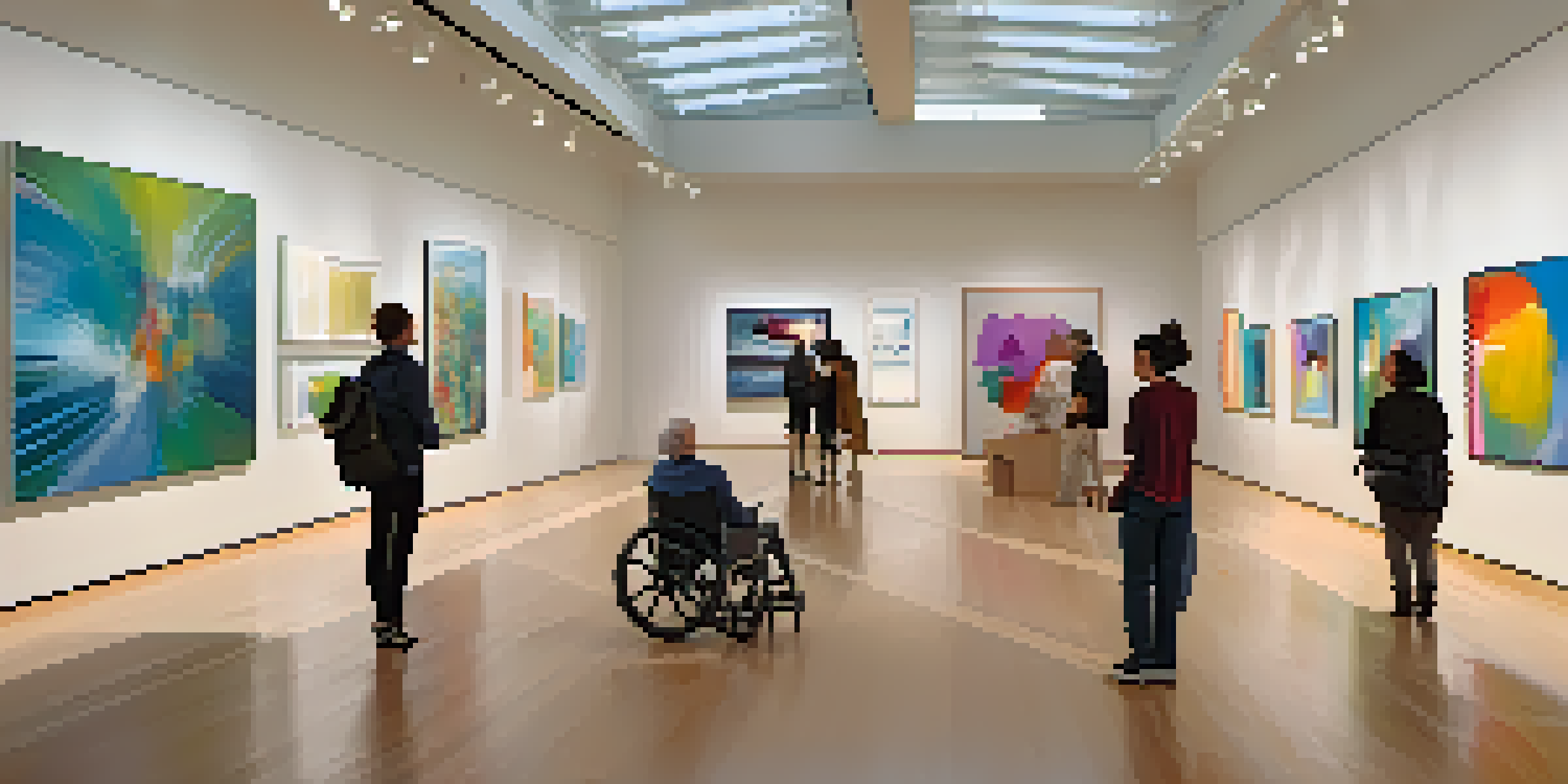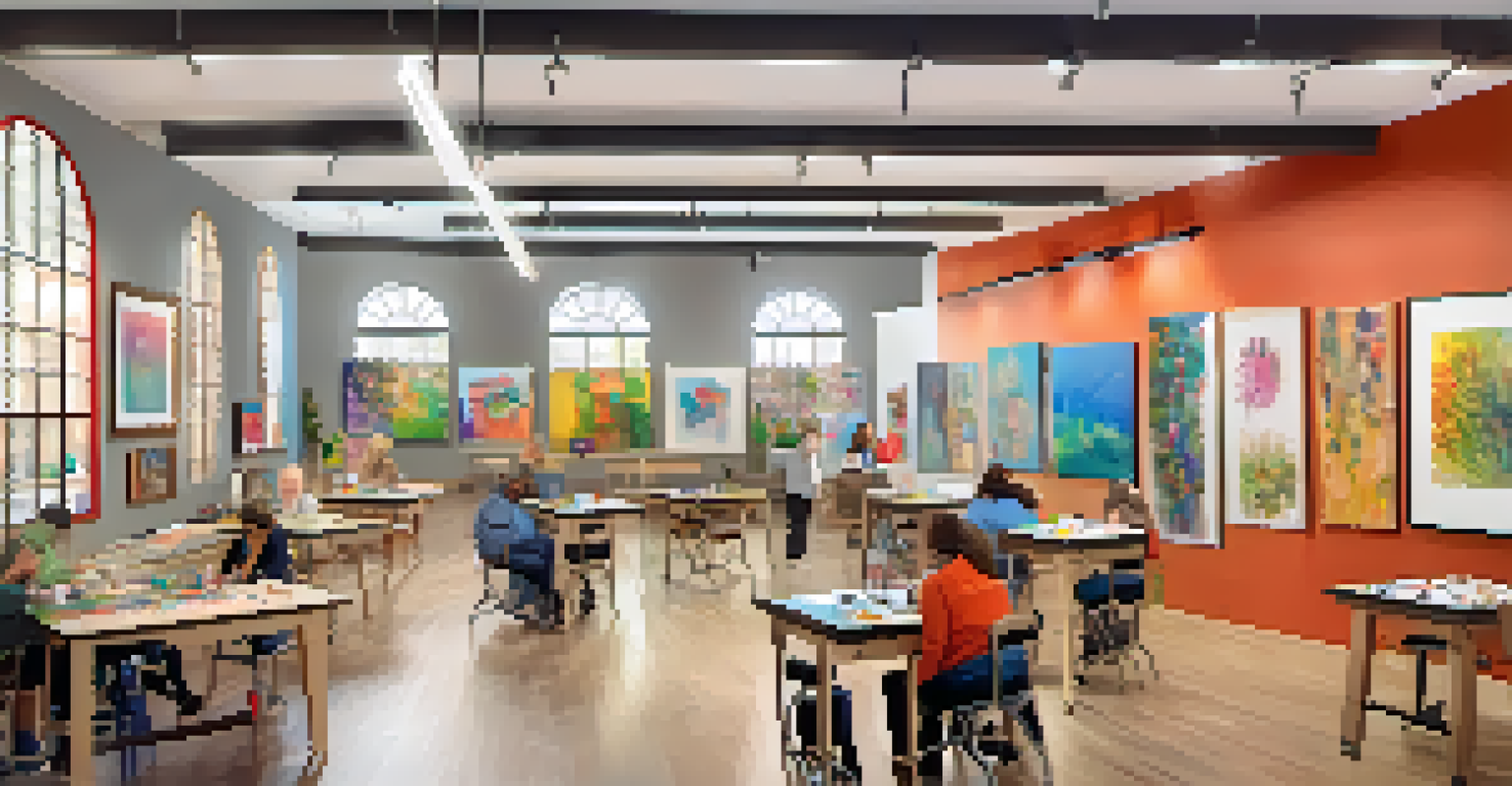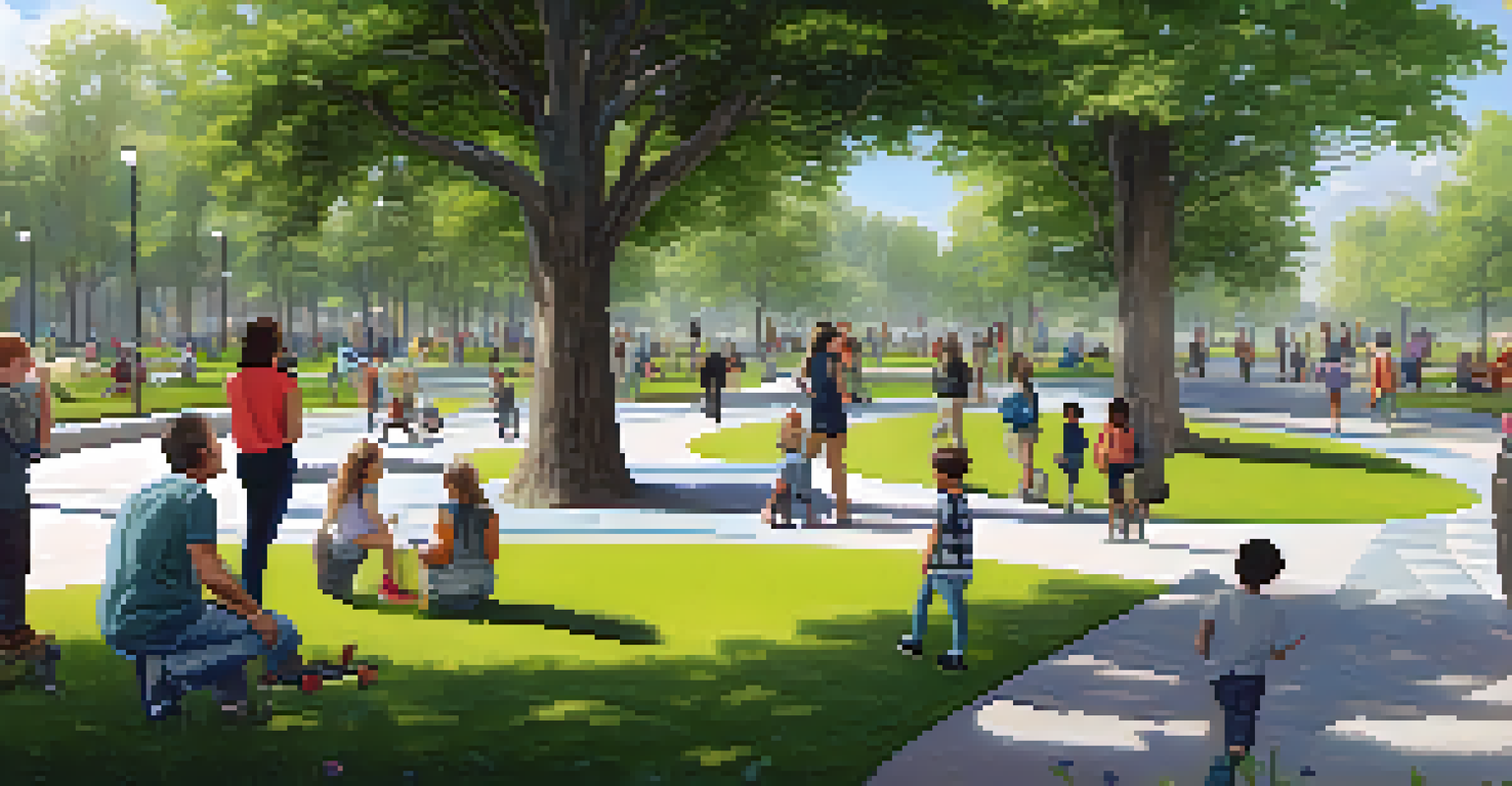Physical Accessibility: A Key Issue in Art Spaces

Understanding Physical Accessibility in Art Spaces
Physical accessibility refers to the design of spaces that allows everyone, regardless of their physical abilities, to access and enjoy them. In art spaces, this means ensuring that galleries, museums, and studios are navigable for people with disabilities. It encompasses features like ramps, wide doorways, and accessible restrooms, which are essential for creating an inclusive environment.
Art is for everyone, and it should be accessible to everyone.
Many art spaces were historically designed without considering the needs of all visitors. This oversight can lead to barriers that discourage engagement from individuals with mobility issues or other disabilities. By recognizing these gaps, we can begin to understand the importance of making art accessible to everyone, thus enriching the cultural experience for all.
Moreover, incorporating accessibility from the ground up not only benefits those with disabilities but enhances the overall visitor experience. It invites a diverse audience, fostering a community that values inclusivity and representation. Therefore, prioritizing physical accessibility in art spaces is not just a legal obligation; it’s a moral imperative.
The Impact of Inaccessible Art Spaces
When art spaces are not physically accessible, it sends a clear message: some people’s experiences in culture and creativity are less valued. This exclusion can lead to feelings of isolation among individuals with disabilities, who may feel unwelcome or discouraged from exploring art. As a result, the rich perspectives and contributions of these individuals are often overlooked.

Inaccessible spaces can also limit the audience for exhibitions and events, leading to decreased attendance and engagement. This not only affects the artistic community but also impacts the financial stability of the venues. By failing to accommodate all visitors, art spaces may inadvertently miss out on potential patrons, supporters, and advocates.
Accessibility Enhances Visitor Experience
Creating accessible art spaces not only benefits individuals with disabilities but also enriches the overall experience for all visitors.
Moreover, the lack of accessibility in art spaces reinforces societal barriers, perpetuating the idea that art is only for certain groups. This can hinder the broader cultural dialogue that art is meant to inspire. By addressing these accessibility issues, we can create a more equitable landscape for artistic expression and appreciation.
Benefits of Accessible Art Spaces
Creating accessible art spaces brings a multitude of benefits, not just for individuals with disabilities but for everyone involved. Accessibility can enhance the overall visitor experience, making it easier for all guests to navigate and enjoy the exhibits. When everyone can participate fully, the art space can harness a wider range of perspectives and feedback, enriching the creative process.
Accessibility is not a privilege; it is a right.
Additionally, accessible art spaces can foster community connections. By welcoming diverse audiences, organizations can build stronger relationships with local communities and create programs that resonate with a broader demographic. This can lead to increased support, engagement, and collaboration, ultimately benefiting the artistic ecosystem as a whole.
Lastly, investing in accessibility can improve the reputation of art spaces. Organizations that prioritize inclusivity are often viewed more favorably, attracting visitors who value diversity and community engagement. This positive image can lead to increased funding opportunities and partnerships, further driving the mission of promoting art for all.
Design Considerations for Accessibility
When designing accessible art spaces, it’s essential to think about various elements that contribute to an inclusive environment. Features such as ramps, elevators, and designated parking spots are foundational, but accessibility goes beyond just physical infrastructure. Clear signage, tactile pathways, and assistive technologies can greatly enhance the experience for individuals with disabilities.
For instance, incorporating audio guides or braille labels can make art more accessible for visually impaired visitors. Similarly, ensuring that spaces have adequate lighting and sound considerations can benefit all guests, creating a more enjoyable experience. By taking a holistic approach to design, art spaces can cater to a diverse range of needs.
Inaccessibility Limits Audience Engagement
Inaccessible art spaces can alienate individuals with disabilities, leading to decreased attendance and a loss of diverse perspectives.
Collaboration with disability advocates and individuals with lived experiences is also crucial in this process. Their insights can help inform designs that genuinely meet the needs of users. Ultimately, prioritizing accessibility in the design phase not only benefits individuals with disabilities but enhances the functionality and appeal of the space for everyone.
Real-World Examples of Accessible Art Spaces
Many art spaces around the world are setting exemplary standards for accessibility. For example, the Tate Modern in London has made significant strides by implementing accessible features, such as step-free access, sensory rooms, and guided tours tailored for individuals with different needs. These initiatives have not only improved accessibility but have also enriched the visitor experience.
Another great example is the Museum of Modern Art (MoMA) in New York, which offers a variety of programs and resources tailored for people with disabilities. From accessible exhibition spaces to dedicated staff training on inclusivity, MoMA showcases how art institutions can lead the way in creating welcoming environments. This demonstrates that accessibility is not merely an afterthought but a fundamental aspect of their mission.
These examples serve as a reminder that when art spaces prioritize accessibility, they foster a more inclusive culture. By learning from these leaders in accessibility, other organizations can implement similar strategies, ensuring that art can be enjoyed by everyone, regardless of their physical abilities.
The Role of Policy in Promoting Accessibility
Policies play a vital role in shaping the accessibility of art spaces. Governments and organizations can create guidelines and regulations that mandate accessible design, ensuring that all public venues cater to diverse needs. These policies can help establish standards that art spaces must meet, paving the way for a more inclusive future.
Beyond legal requirements, advocacy for accessibility can lead to cultural shifts within the art community. When organizations actively promote and prioritize inclusivity, they set a precedent for others to follow. This advocacy can help change perceptions about disability and art, fostering a culture that values every individual's experience.
Policies Drive Accessibility Improvements
Effective policies and advocacy are essential for promoting accessibility in art spaces, ensuring that inclusivity becomes a standard practice.
Moreover, funding and support for accessibility initiatives can be bolstered through policy. Grants and incentives for art spaces that implement accessibility measures can encourage more venues to take action. In this way, policy not only lays the groundwork for accessibility but can also empower organizations to embrace inclusivity wholeheartedly.
Moving Forward: A Call to Action for Art Spaces
As we reflect on the importance of physical accessibility in art spaces, it’s crucial for organizations to take proactive steps toward inclusivity. This means not only assessing existing barriers but also actively seeking input from individuals with disabilities to inform future changes. Listening to their experiences can guide the implementation of effective accessibility measures.
Additionally, art spaces should foster a culture of continuous improvement. Accessibility should be viewed as an evolving process, with regular assessments and updates to ensure that all visitors feel welcome. This mindset allows organizations to adapt to changing needs and expectations, ensuring long-term inclusivity.

In conclusion, enhancing physical accessibility in art spaces is not just a responsibility; it’s an opportunity to enrich the cultural landscape for everyone. By committing to inclusivity, art spaces can not only transform their environments but also contribute to a more equitable society where art truly belongs to all.